MRSEC Materials Characterization Facility
Already have a Logon Account?
|
Welcome
Welcome to the University of California San Diego FBS Portal. This site is designed to automate the use of our Core Facilities and to provide the best possible customer service. Quick Info
For more info, please contact the PSI Support Team. | Our Core Facilities To learn more about a particular facility or to request access, please click on a facility name below. Center for AIDS ResearchMoores Cancer Center |
Main Contact Info
Remittance Contact Info
| Other Contacts | |||
|---|---|---|---|
| Ricardo De Luna | Facility Manager | (858) 534-8945 | rideluna@ucse.du |
| Rand Kingsford | Facility Engineer | rkingsford@ucsd.edu | |
This facility has not published any Products. Please check back.
The following Products and Services are available within our facility:
Default Category
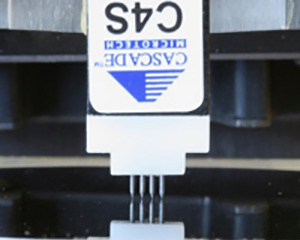 |
4-Point ProbeKeithley DMM 7510 multimeter, pneumatically actuated probe station, and micrometer thickness gauge for wafer resistivity measurements. Keithley DMM 7510 multimeter, pneumatically actuated probe station, and micrometer thickness gauge for wafer resistivity measurements. |
APD430xThorLabs APD430x adjustable gain avalanche photodetectors (APD) with 4-stage 2x pre-amplifiers and storage oscilloscope for single-element, single-wavelength detection with a temporal resolution of 50 nanoseconds. ThorLabs APD430x adjustable gain avalanche photodetectors (APD) with 4-stage 2x pre-amplifiers and storage oscilloscope for single-element, single-wavelength detection with a temporal resolution of 50 nanoseconds. |
|
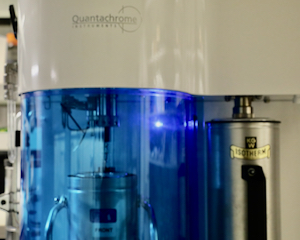 |
BETAnton Paar™ Quantachrome autosorbIQ automated gas sorption analyzer for measurement of chemisorption (hydrogen, methane, other reactive gases) and physisorption (nitrogen) processes. The physisorption mode allows acquisition of data to determine surface area (via BET analysis of the isotherm), average pore size (via BJH or DFT isotherm models), and pore volume (via BJH or DFT isotherm models) on non-porous, mesoporous, and microporous materials. Featuring an extended range physisorption and chemisorption pressure transducer, system is capable of determining specific surface areas below 0.01 m2/g, active areas, pore volumes, and pore size distributions down to 0.35 nm in solid porous samples. Unit has 4 degas and 3 analysis ports for physisorption measurements on multiple samples simultaneously. Note sample degas and isotherm acquisition can require several hours of instrument time per run. Mesopore samples usually require ~4hrs total; micropore samples generally require longer degas times and so can require up to 18h of analysis time. The mass of sample needed for analysis depends on its surface area; recommended total surface area for a surface area measurement is 2 m2 and for a pore size measurement it is 10 m2. So for example if your sample has a specific surface area of 200 m2/g, it will require ~50 mg of material for a good analysis. The facility also maintains the older and slower Micromeritics™ ASAP 2020 gas adsorption/surface area measurement apparatus. Anton Paar™ Quantachrome autosorbIQ automated gas sorption analyzer for measurement of chemisorption (hydrogen, methane, other reactive gases) and physisorption (nitrogen) processes. The physisorption mode allows acquisition of data to determine surface area (via BET analysis of the isotherm), average pore size (via BJH or DFT isotherm models), and pore volume (via BJH or DFT isotherm models) on non-porous, mesoporous, and microporous materials. Featuring an extended range physisorption and chemisorption pressure transducer, system is capable of determining specific surface areas below 0.01 m2/g, active areas, pore volumes, and pore size distributions down to 0.35 nm in solid porous samples. Unit has 4 degas and 3 analysis ports for physisorption measurements on multiple samples simultaneously. Note sample degas and isotherm acquisition can require several hours of instrument time per run. Mesopore samples usually require ~4hrs total; micropore samples generally require longer degas times and so can require up to 18h of analysis time. The mass of sample needed for analysis depends on its surface area; recommended total surface area for a surface area measurement is 2 m2 and for a pore size measurement it is 10 m2. So for example if your sample has a specific surface area of 200 m2/g, it will require ~50 mg of material for a good analysis. The facility also maintains the older and slower Micromeritics™ ASAP 2020 gas adsorption/surface area measurement apparatus. |
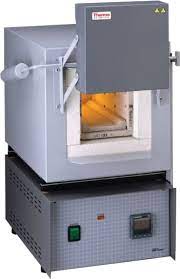 |
Box-FurnaceFor heating of larger samples up to 1000C in air. Typically used for atmospheric oxidation of samples. For heating of larger samples up to 1000C in air. Typically used for atmospheric oxidation of samples. |
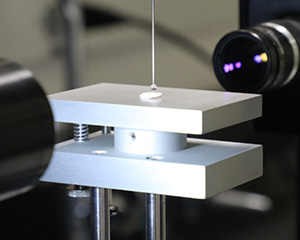 |
Contact AngleGoniometer rame-hart Model 200 for measuring contact angle, surface tension, and surface energy on flat surfaces. Includes a manual Tilting Base for measuring contact angles. Also includes environmental fixture, for measuring liquid/liquid interactions; the fixture is primarily used for captive bubble analysis of hydrogels in solution with air drops released from an inverted needle. Goniometer rame-hart Model 200 for measuring contact angle, surface tension, and surface energy on flat surfaces. Includes a manual Tilting Base for measuring contact angles. Also includes environmental fixture, for measuring liquid/liquid interactions; the fixture is primarily used for captive bubble analysis of hydrogels in solution with air drops released from an inverted needle. |
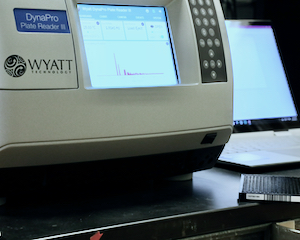 |
DLS-PRWyatt Instruments DynaPro® Plate Reader III measures DLS and SLS in a plate reader format, allowing rapid measurement of nanoparticle size of up to 1536 samples in a single run. Measures average nanoparticle size and number density, aggregate size distributions, changes in solution molecular weight, thermal stability, colloidal stability, and viscosity. Variable temperature-capable. Particle concentration and static light scattering available as well. Wyatt Instruments DynaPro® Plate Reader III measures DLS and SLS in a plate reader format, allowing rapid measurement of nanoparticle size of up to 1536 samples in a single run. Measures average nanoparticle size and number density, aggregate size distributions, changes in solution molecular weight, thermal stability, colloidal stability, and viscosity. Variable temperature-capable. Particle concentration and static light scattering available as well. |
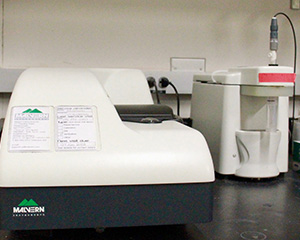 |
DLS-ZetasizerMalvern Instruments™ Zetasizer Nano™ for determination of nanoparticle size and charge. Features Multi Purpose Titrator for zeta potential measurements. Malvern Instruments™ Zetasizer Nano™ for determination of nanoparticle size and charge. Features Multi Purpose Titrator for zeta potential measurements. |
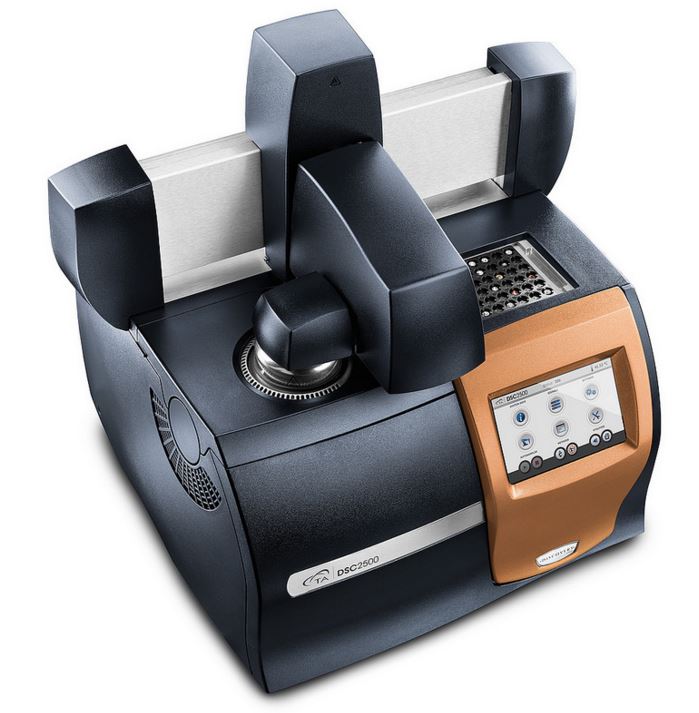 |
DSC 2500TA Instruments™ Discovery DSC 2500™ High resolution Differential Scanning Calorimetry. RCS chiller allows cryo analysis down to -90C-600C. Prior TGA data is required to operate the DSC in order to minimize offgassing pressurization of the sealed pans. TA Instruments™ Discovery DSC 2500™ |
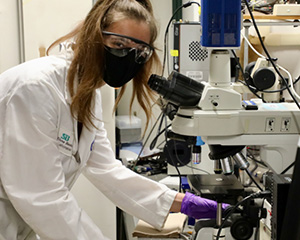 |
Fluo. MicroscopeNikon Eclipse LV-150 dark-field microscope coupled with a photometrics CCD camera for steady-state fluorescence imaging. Nikon Eclipse LV-150 dark-field microscope coupled with a photometrics CCD camera for steady-state fluorescence imaging. |
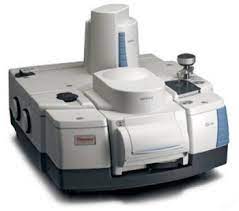 |
FTIRNicolet iS50 FTIR spectrometer, fitted with Smart-iTR diamond Attenuated Total Reflectance for ATR measurements; instrument can also be configured for transmission mode measurements. Nicolet iS50 FTIR spectrometer, fitted with Smart-iTR diamond Attenuated Total Reflectance for ATR measurements; instrument can also be configured for transmission mode measurements. |
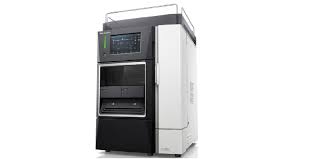 |
GPCGPC comprised of Shimadsu LC-2050 HPLC, Wyatt miniDawn MALS and Wyatt OptiLab Differential Refractometer. Used to determine molecular weight of polymers, to determine protein size or to identify fragmentation of proteins. Columns for aqueous media (for protein separations), or organic media (for polymer characterization) available. GPC comprised of Shimadsu LC-2050 HPLC, Wyatt miniDawn MALS and Wyatt OptiLab Differential Refractometer. Used to determine molecular weight of polymers, to determine protein size or to identify fragmentation of proteins. Columns for aqueous media (for protein separations), or organic media (for polymer characterization) available. |
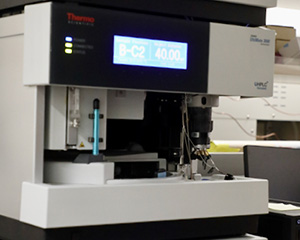 |
HPLCThermo Scientific Dionex UltiMate 3000 UHPLC. Pressures up to 620 bar (9,000 psi) at flow rates of up to 10 mL/min, detector data collection rates up to 100 Hz, and injection cycle times as low as 15 s, supports conventional LC and UHPLC applications. Thermo Scientific Dionex UltiMate 3000 UHPLC. Pressures up to 620 bar (9,000 psi) at flow rates of up to 10 mL/min, detector data collection rates up to 100 Hz, and injection cycle times as low as 15 s, supports conventional LC and UHPLC applications. |
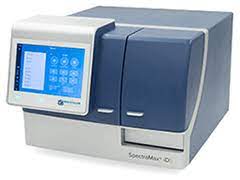 |
iD5 PRMolecular Devices SpectraMax iD5 Multi-Mode Microplate Reader measures absorbance, and luminescence. The iD5 also measures TRF and FP. Molecular Devices SpectraMax iD5 Multi-Mode Microplate Reader measures absorbance, and luminescence. The iD5 also measures TRF and FP. |
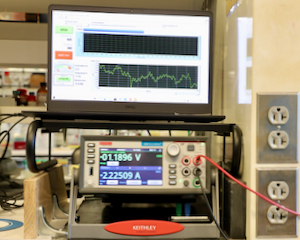 |
KEITHLEY-2460For voltage or current-controlled electrochemical processing of materials. Can be used to fabricate photonic crystals, Bragg stacks, microcavities, Fabry-Perot layers, microparticles, nanoparticles, and quantum dots from single-crystal silicon wafers. For voltage or current-controlled electrochemical processing of materials. Can be used to fabricate photonic crystals, Bragg stacks, microcavities, Fabry-Perot layers, microparticles, nanoparticles, and quantum dots from single-crystal silicon wafers. |
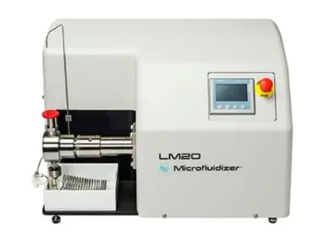 |
MicrofluidizerLM-20 Microfluidizer from Microfluidics for high shear homogenization of samples, with pressure capability up to 30,000 psi. A diamond impaction cell is currently only available. LM-20 Microfluidizer from Microfluidics for high shear homogenization of samples, with pressure capability up to 30,000 psi. A diamond impaction cell is currently only available. |
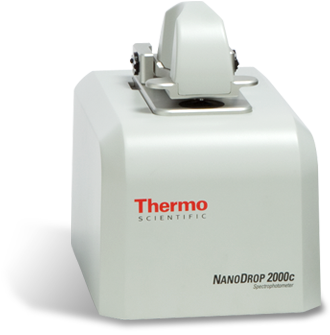 |
Nano-DropThermo Scientific Nano-Drop 2000 for quantifying protein, DNA, RNA, and small molecule concentrations with 1-2 uL sample size. Thermo Scientific Nano-Drop 2000 for quantifying protein, DNA, RNA, and small molecule concentrations with 1-2 uL sample size. |
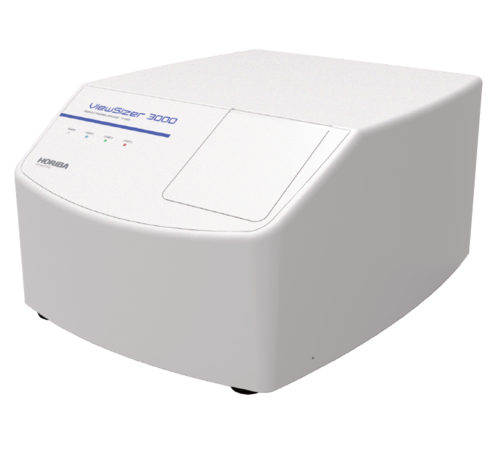 |
NTAViewsizer 3000 from Horiba. For direct measurement of brownian motion thorugh use of three wavelengths providing size from 10nm-15 um and particle concentration. Viewsizer 3000 from Horiba. For direct measurement of brownian motion thorugh use of three wavelengths providing size from 10nm-15 um and particle concentration. |
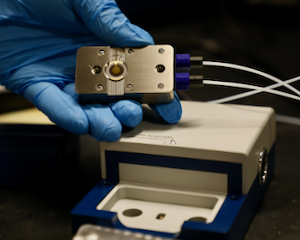 |
QCM-DBiolin Scientific™ QSense Explorer™ for real-time analysis of surface-molecule interactions, thickness (or mass), viscosity, shear modulus and the frequency dependence of the viscosity and shear modulus. Kinetics, slope, rise time. Quartz Crystal Microbalance with Dissipation Monitoring (QCM-D) technology Biolin Scientific™ QSense Explorer™ for real-time analysis of surface-molecule interactions, thickness (or mass), viscosity, shear modulus and the frequency dependence of the viscosity and shear modulus. Kinetics, slope, rise time. Quartz Crystal Microbalance with Dissipation Monitoring (QCM-D) technology |
QEProOcean Optics QEPro and QE65000 thermoelectrically cooled CCD spectrometers for low-light applications such as photoluminescence and fluorescence measurements. Ocean Optics QEPro and QE65000 thermoelectrically cooled CCD spectrometers for low-light applications such as photoluminescence and fluorescence measurements. |
|
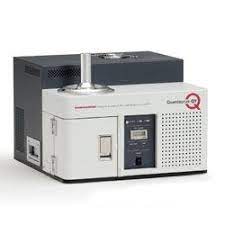 |
Quantum YieldQuantaurus-QY C11347 for absolute photoluminescence quantum yields and excitation-emission matrix (EEM) spectra from solid or liquid samples. Quantaurus-QY C11347 for absolute photoluminescence quantum yields and excitation-emission matrix (EEM) spectra from solid or liquid samples. |
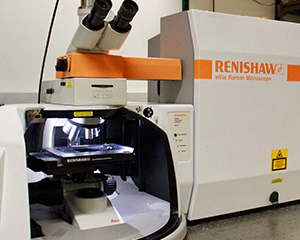 |
RamanRenishaw™ inVia™ upright microscope with x-y mapping stage. 532nm and 785nm laser sources. Due to heavy usage, the Facility has two of these instruments available for use, one in Pacific Hall and the other in the Structural and Materials Engineering (SME) building. Renishaw™ inVia™ upright microscope with x-y mapping stage. 532nm and 785nm laser sources. Due to heavy usage, the Facility has two of these instruments available for use, one in Pacific Hall and the other in the Structural and Materials Engineering (SME) building. |
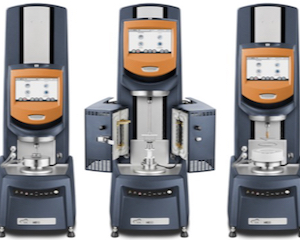 |
RheometerTA Instruments™ Discovery™ HR-30 Hybrid Rheometer. For characterizing a wide range of rheologic and viscoelastic properties of soft and solid materials: elastic modulus, viscous modulus, shear modulus, storage modulus, loss modulus, dynamic mechanical analysis, etc. TA Instruments™ Discovery™ HR-30 Hybrid Rheometer. For characterizing a wide range of rheologic and viscoelastic properties of soft and solid materials: elastic modulus, viscous modulus, shear modulus, storage modulus, loss modulus, dynamic mechanical analysis, etc. |
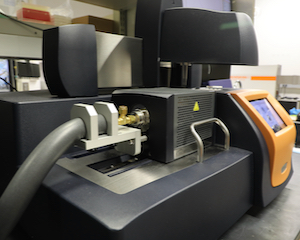 |
SDT 650TA Instruments™ Discovery SDT 650™ simultaneous DSC/TGA. An MKS Cirrus 3 mass spectral analyzer is attached, allowing measurement of evolved gases up to 300 amu. Equipped with autosampler robot to load up to 30 samples. Can use nitrogen, argon, oxygen ambients. There is an additional charge for sample pans. TA Instruments™ Discovery SDT 650™ simultaneous DSC/TGA. An MKS Cirrus 3 mass spectral analyzer is attached, allowing measurement of evolved gases up to 300 amu. Equipped with autosampler robot to load up to 30 samples. Can use nitrogen, argon, oxygen ambients. There is an additional charge for sample pans. |
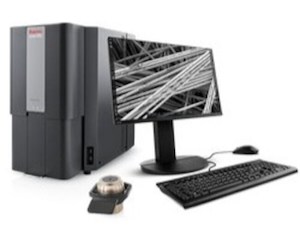 |
SEMPhenom G6 Pro SEM from nanoScience Instruments™ (Thermo Fisher™) with a cesium hexaboride source. This benchtop instrument is for users who do not need the very high resolution of the state-of-the-art SEM and TEM instruments available at the UCSD Nano-3 facility. Situated between confocal optical microscopy and these high-end electron microscopes in terms of resolution, the instrument provides a user-friendly entry point for persons not familiar with electron microscopy. Back-scattered detection (BSD), secondary electron detection (SED), or mixed detection are available. Magnification range of 160-350,000x. A single-stub stage supports sample sizes up to 25mm x 35 mm. Sample introduction is very rapid: 18 seconds between initial pump-down and image acquisition. A sample charging reduction stage is available (BSD mode) for samples that cannot be sputter coated. A Luxor Sputter Coater is also available, for inverted coating (argon atmosphere) of up to 7 sample stubs with platinum layers of thickness 1-100nm to reduce charging in the electron beam. Can be used for sample drying as well. UC users: $15/coating run; Non UC users: $21.75/coating run. Up to 7 sample stubs can be included in a single coating run. Phenom G6 Pro SEM from nanoScience Instruments™ (Thermo Fisher™) with a cesium hexaboride source. This benchtop instrument is for users who do not need the very high resolution of the state-of-the-art SEM and TEM instruments available at the UCSD Nano-3 facility. Situated between confocal optical microscopy and these high-end electron microscopes in terms of resolution, the instrument provides a user-friendly entry point for persons not familiar with electron microscopy. Back-scattered detection (BSD), secondary electron detection (SED), or mixed detection are available. Magnification range of 160-350,000x. A single-stub stage supports sample sizes up to 25mm x 35 mm. Sample introduction is very rapid: 18 seconds between initial pump-down and image acquisition. A sample charging reduction stage is available (BSD mode) for samples that cannot be sputter coated. A Luxor Sputter Coater is also available, for inverted coating (argon atmosphere) of up to 7 sample stubs with platinum layers of thickness 1-100nm to reduce charging in the electron beam. Can be used for sample drying as well. UC users: $15/coating run; Non UC users: $21.75/coating run. Up to 7 sample stubs can be included in a single coating run. |
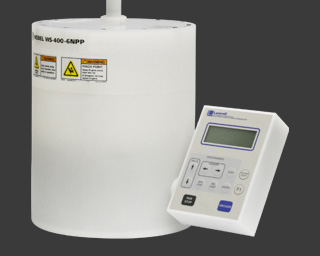 |
Spin CoaterLaurell Model WS-400B-6NPP/LITE spin-coater for depositing thin films onto flat surfaces up to 6 inches (150mm) diameter. Laurell Model WS-400B-6NPP/LITE spin-coater for depositing thin films onto flat surfaces up to 6 inches (150mm) diameter. |
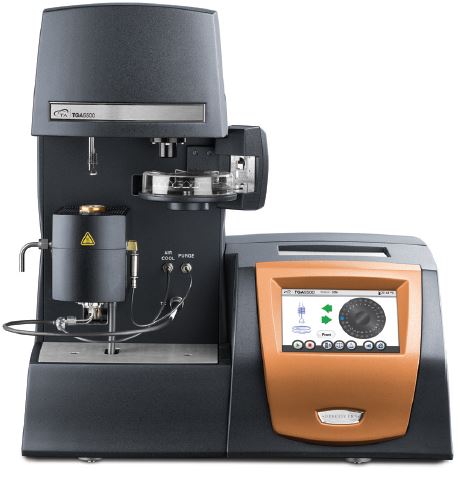 |
TGA 5500TA Instruments™ Discovery TGA 5500™ High sensitivty Thermo Gravimetric Analysis from RT-1200C. Infrared furnace and heat exchange allow for rapid cooling in <10 minutes from 1200C-RT. TA Instruments™ Discovery TGA 5500™ |
Time Gated PLANDOR iSTAR 334T high-speed thermoelectrically cooled intensified CCD (iCCD) camera for time-gated photoluminescence spectroscopy measurements at a temporal resolution of 8 nanoseconds. ANDOR iSTAR 334T high-speed thermoelectrically cooled intensified CCD (iCCD) camera for time-gated photoluminescence spectroscopy measurements at a temporal resolution of 8 nanoseconds. |
|
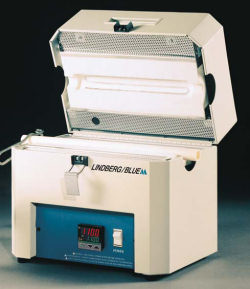 |
TUBE-FURNACELindberg/Blue Mini-Mite model TF55035A. For heating of samples up to 1100C under a controlled atmosphere (air, nitrogen, argon, forming gas). Lindberg/Blue Mini-Mite model TF55035A. For heating of samples up to 1100C under a controlled atmosphere (air, nitrogen, argon, forming gas). |
USB-4000Ocean Optics USB-4000 and USB-2000 CCD spectrometers for absorbance and reflectance measurements. Ocean Optics USB-4000 and USB-2000 CCD spectrometers for absorbance and reflectance measurements. |
|
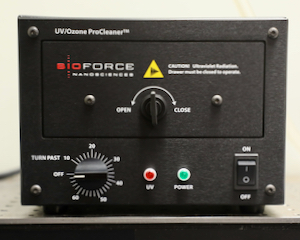 |
UV-OzoneBioforce ProCleaner Plus UV ozone cleaner for surface oxidation and removal of organic contaminants from inert surfaces. Coverage area is 4" x 5" (100mm x 125mm) Bioforce ProCleaner Plus UV ozone cleaner for surface oxidation and removal of organic contaminants from inert surfaces. Coverage area is 4" x 5" (100mm x 125mm) |
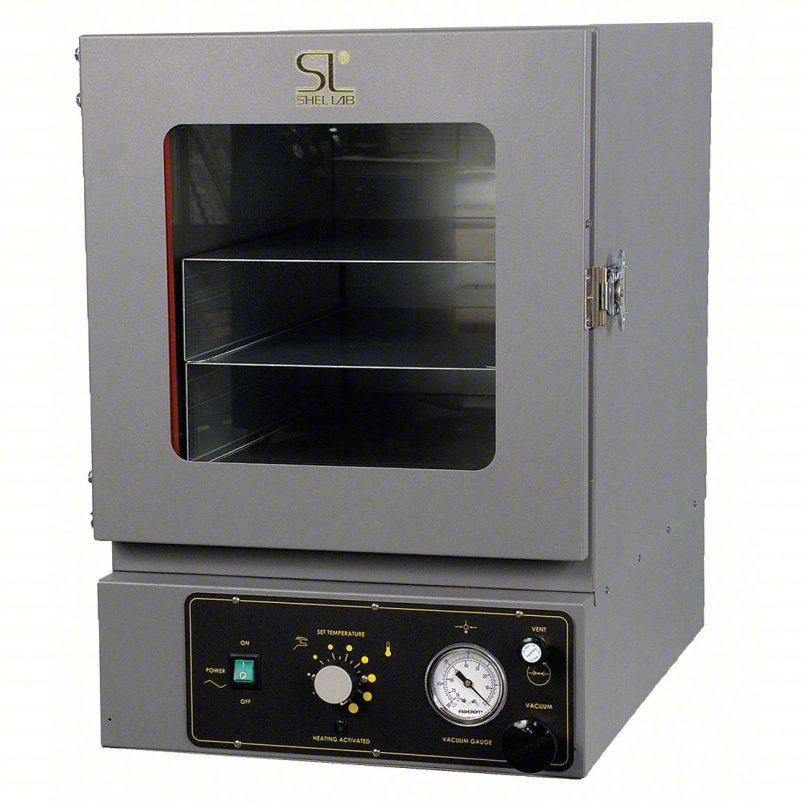 |
Vacuum OvenFisher Scientific Isotemp model 280A. For heating of samples up to 300C under reduced pressure. Vacuum typically 200 mTorr. Fisher Scientific Isotemp model 280A. For heating of samples up to 300C under reduced pressure. Vacuum typically 200 mTorr. |
 |
XRFEpsilon 1™ XRF from Malvern Panalytical™ provides elemental composition analysis of elements from sodium to americium, with sensitivity in the ppm to ppb range. Can analyze both liquid and solid samples, powders, and samples contained in plastic or glass containers. Epsilon 1™ XRF from Malvern Panalytical™ provides elemental composition analysis of elements from sodium to americium, with sensitivity in the ppm to ppb range. Can analyze both liquid and solid samples, powders, and samples contained in plastic or glass containers. |
We ask that any publications or presentations acknowledge use of these MRSEC-supported facilities with the following statement: “The authors acknowledge the use of facilities and instrumentation supported by NSF through the UC San Diego Materials Research Science and Engineering Center (UCSD MRSEC), grant # DMR-2011924”
This facility has not published any News. Please check back.
Quick Quotes have not been configured. Please check back soon (Code 001, Code 002)

